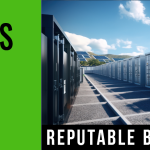
In many electric utility markets, policymakers are exploring the next generation of renewable energy policies that will deliver the most value given the new reality of low-cost solar PV, wind and energy storage. Policies that encourage energy storage to be paired with solar or wind generation can have an outsized impact because these grid assets can together deliver firm capacity into peak periods when customer costs are the highest. If implemented effectively, the results are lower costs for ratepayers, increased resiliency and reduced emissions.
A Clean Peak Standard (CPS) is a relatively new policy tool that can increase the share of renewable energy resources used to meet peak demand. Now is the ideal time to implement Clean Peak Standards in the U.S. because there is a significant amount of peaking capacity that is over 40 years old, as shown in Figure 1. Over the next 20 years, about 152 GW of peaking capacity is expected to retire. For example, in North and South Carolina, 1.61 GW of winter peaking capacity is scheduled to retire by 2028 according to Duke Energy Carolinas and Duke Energy Progress.
Arizona and California have proposed a CPS, and in 2018 Massachusetts became the first state to establish a CPS requiring the delivery of a minimum percentage of kilowatt-hour sales from clean peak resources during system peak demand periods. Building upon these efforts, Energy Intelligence Partners (EIP) has developed a new CPS concept that improves the traditional CPS. It leverages the improving economics of energy storage (ES) to address the limitations of renewables and will help create a truly reliable clean grid.
ES has the capability to address the main drawback of renewable energy — its intermittency — and turn renewable energy resources into truly dispatchable assets. EIP developed an ES-centric CPS for North Carolina’s regulated monopoly electricity market, but it can be a model for other states with similar energy markets.
The energy storage-centric CPS (CPS-ES) requires that renewable energy generation is paired with ES. A portion of power delivered during designated peak periods must be generated by renewable energy and delivered by some combination of the renewable energy generator and paired ES. This means that unlike other CPS programs, generators are not just incentivized to deliver during peak periods, they are required.
Click Here to Read Full Article





